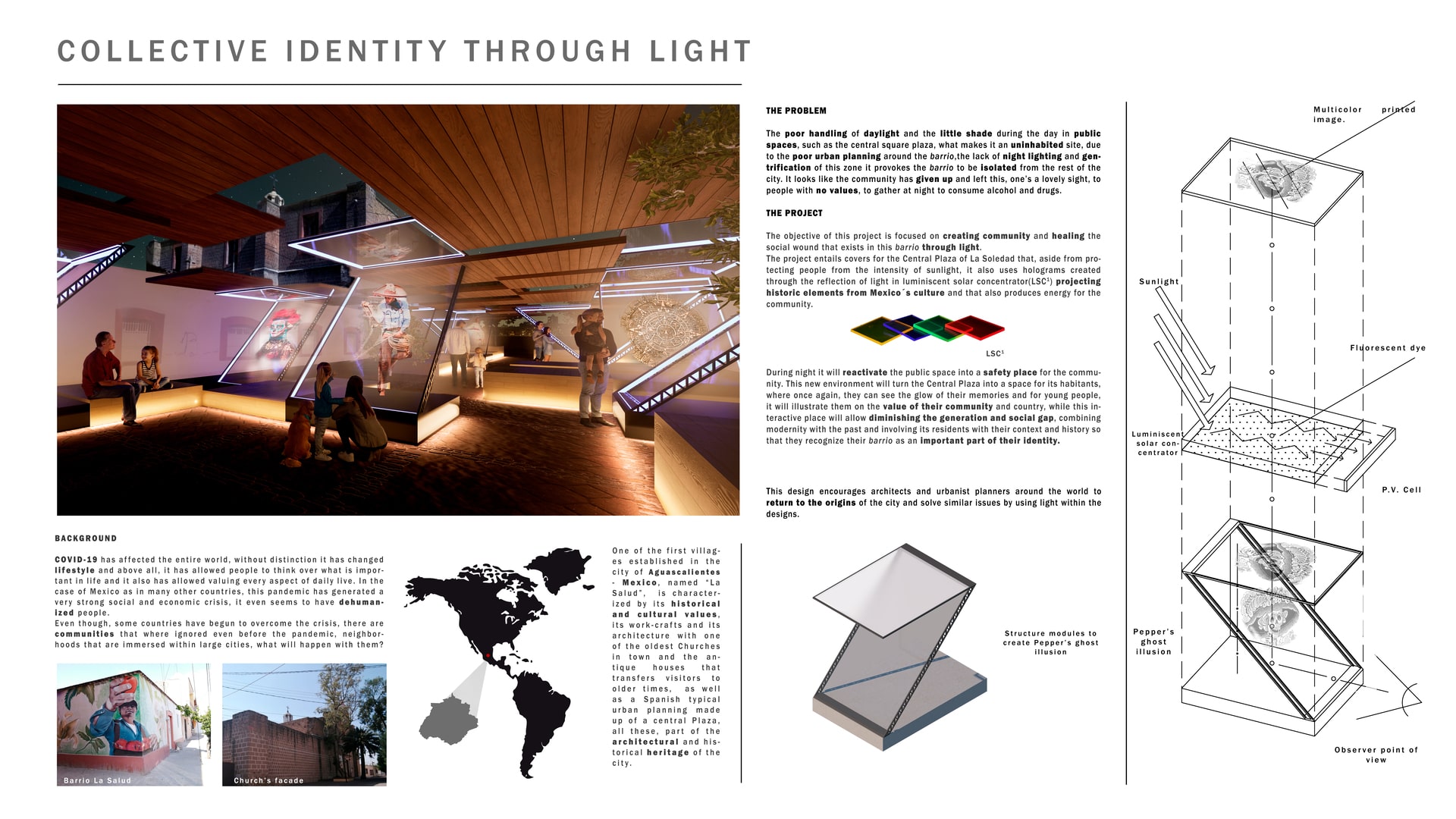Project Description
INTRODUCTION COVID-19 has affected the entire world, without distinction it has changed lifestyle and above all, it has allowed people to think over what is important in life and it also has allowed valuing every aspect of daily live. In the case of Mexico as in many other countries, this pandemic has generated a very strong economic and social crisis, it even seems to have dehumanized people. Even though, some countries have begun to overcome the crisis, there are communities that where ignored even before the pandemic, neighborhoods that are immersed within large cities, what will happen with them? It is there, where architects and architecture students must act and heed the most affected areas to restore those bonds of community that are sorely needed at this time when confinement has ended. BACKGROUND One of the first villages established in the city of Aguascalientes - Mexico, named “La Salud”, is characterized by its historical and cultural values, its work crafts and its architecture with one of the oldest Churches in town and the antique houses that transfers visitors to older times, as well as a Spanish typical urban planning made up of a central Plaza, all these, part of the architectural and historical heritage of the city. Older residents of the community remember their barrio as a productive place with the work-crafts and the fruit groves. However, the development of the city over time required new roads and shops that, due to poor planning, has isolated this barrio from the rest of the city. The fruit groves were lost as well as the job, its residents grew old and young people left in search of new opportunities. Insecurity increased as it turned into an abandoned site, even by the authorities. The few residents who still live there, feel alien to the city and a serious social injury is perceived in the barrio, not only with the rest of the city but also among its residents. All the above, increased the generation gap, weakness on communication and coexistence, been enhanced by COVID-19. Values and knowledge adults have been lost because of the gap between youngers and they also ignored the historical and architectural value of their barrio. THE PROBLEM Some of the problems that causes the situation mentioned before is the poor handling of daylight and the little shade during the day in public spaces, such as the central square of the barrio, what makes it an uninhabited site, the poor urban planning around the barrio , the lack of night lightning and gentrification of this zone it provokes the barrio to be isolated from the rest of the city. It looks like the community has given up and left this, one’s a lovely sight, to people with no values, to gather at night to consume alcohol and drugs. OBJECTIVE The objective of this project is focused on creating community and healing the social wound that exists in this barrio through light. It has been identified that the central square of this barrio has the qualities to regenerate the sense of community within the barrio, as its architecture and history background is the perfect place to attract people from all over the city to get to know the site, establish connections and interaction with local shops, returning the economic activity of the barrio. THE PROJECT The project entails covers for the Central Plaza of La Soledad that, aside from protecting people from the intensity of sunlight, it also uses holograms created through the reflection of light in luminescent solar concentrators(LSC) projecting historic elements from their barrio and Mexico’s culture, it will also produce energy for the community. During night it will reactivate the public space into a safety place for the community. This new environment will turn the Central Plaza into a space for its habitants, where once again, they can see the glow of their memories and for young people, it will illustrate them on the value of their community and country, while this interactive place will allow diminishing the generation and social gap, combining modernity with the past and involving its residents with their context and history so that they recognize their barrio as an important part of their identity. This design encourages architects and urbanist planners around the world to return to the origins of the city and solve similar issues by using light within the designs.
